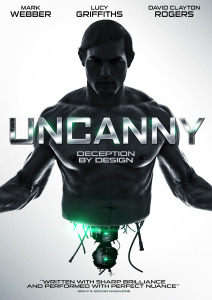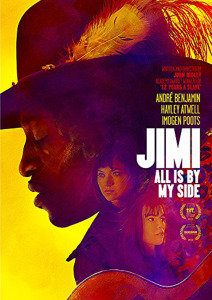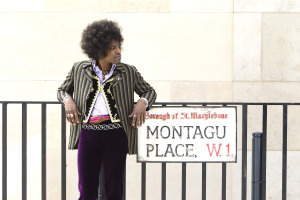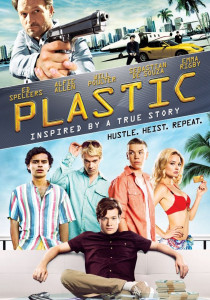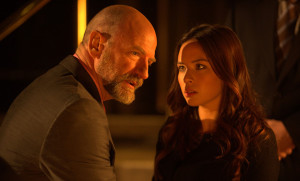( …AND TO REVIVE A MAGICAL EVENING WITH MARY BADHAM AND MY MOM)

Actress Mary Badham. The legendary film TO KILL A MOCKINGBIRD. My late mother, Annabelle, who died in 2009. The prevalence of racism and bad behavior in America today. All of these things hit me in a whole new way this past week when I accidentally stumbled across the original recording of an in-person interview I did with Ms Badham back in 2009, a piece that is no longer available online (it originally appeared on the defunct PlaybackSTL site). I’m sharing most of the complete interview here, but more importantly, the context has changed considerably, rendering this trip into the past more than a little noteworthy. Yes, TO KILL A MOCKINGBIRD is still one of my three or four all-time favorite movies, and yes, racism still exists… not just the straightforward kind that is depicted in the classic 1961 film, but a far more widespread and violent strain that makes the news somewhere almost daily. I can talk about either subject for hours. But this old interview captures transcendent moments from the last “evening out” that my mom and I enjoyed together, in January 2009. Just a few weeks after the occasion that led to this interview, a revival of TKAM at Washington University’s Edison Theatre, my mom suffered a terrible fall. She was seriously injured, and despite some promising efforts by a couple of doctors to get her to recover, it wasn’t meant to be. She slipped away in April 2009. Among many, many things that were noteworthy about my mom was her gift for cheerful understatement, and occasionally, eyebrow-raising surprise. A bombshell she dropped on her four kids one day was that she had gotten to hang out with author Harper Lee one day and see a screening of TO KILL A MOCKINGBIRD with her the year it opened, thanks to a mutual friend named Mae McCleavey. I never sat down and interviewed Mom herself, despite knowing I probably SHOULD on many an occasion. If I told most people that the reclusive author watched the movie made of her masterpiece with my own mother, I wouldn’t blame them for being skeptical. How could such a thing happen? But… this interview features a golden moment, Mom actually telling Mary Badham, the gifted actress who played Scout in the movie, that yes, she sat in a theatre with Harper Lee. Hearing her speak after all these years is more than a little emotional for me, as is virtually everything Mary had to say about the film. So yes, this one is “from the vaults” all right, but in light of the context the present day provides, it might as well be new. I’m grateful I came across this, because the disc on which it appears was not labeled accurately.

I don’t have to repeat the praise here that I bestowed on the Gregory Peck masterpiece in my original article. TKAM is a beloved film all over the world, one of Hollywood’s most successful film adaptations ever, not to mention the historical impact of Harper Lee’s original novel (which STILL finds crackpot right-wingers trying to ban it even today cause of all that “critical race theory” stuff. Don’t get me started). But what I am happy to share is that the movie was a singularly worthy entry in the family-viewing contest I experienced growing up and beyond. Very, very few movies could meet the approval of every single member of my family – varied bunch that we were – when we would get together to watch something. TO KILL A MOCKINGBIRD stood almost alone in that regard. Both the snobbiest among us and the most open-minded among us were willing to watch the exploits of Atticus Finch, Scout and Jem (and that Boo Radley guy) for yet another time. And to a person, we were all emotional afterward… again. “What a great movie!” someone would remark. How amazing a thing, that this remark could have come from any of the six of us. That, my friends, is unprecedented. When I met the adult Mary Badham, the lady who gave what is easily one of the best performances by a child actress in history (I told her as much, which was a thrill for me), I had a chance to tell her about our family viewings of the film, how my sister would sometimes say “Hey, Boo!” when she called me up, how one of us might query the other, “What in the Sam Hill are ya DOING?,” gleefully reciting another of Scout’s great lines from the film, and how I’d written to Gregory Peck once when he was still alive, talking about my love for the film. He sent me an autographed photo, bless his heart. And upon meeting Mary Badham, I got HER autograph on a famous pose of her and Peck, meaning that I’ve got a treasured scrawl from the two main stars of a genuine movie masterpiece. Yes, I’m a fanboy for stuff like this. Can’t help it. Mary was tickled by my enthusiasm, but she’s heard these things so many, many times… as the interview makes clear. And sitting nearby, respectfully not interrupting until the very end, was my mother. The whole thing is just unbelievable to me, honestly. My last “night out” with Mom, spent in the company of “Scout”! Not bad, eh? So here’s that interview from January 2009…

THE MULE: What stands out the most from your time filming the movie?
MARY: Mostly just having fun. We had a ball! We really did. We played a lot, we laughed a lot… it was playtime! It wasn’t like work. Our wonderful director, Bob Mulligan, he made it so easy. He really did. All these guys had small children they were dealing with at home at that period in time. So they knew how to communicate with children. We had so much fun!
THE MULE: They had a certain way of talking to you, then?
MARY: Yeah, very easy. Real down to earth. They didn’t talk down to us. Bob Mulligan, one of the things that made him such a fabulous director… he would get down to our level, he would kneel, literally, just squat down and talk to us face to face like two adults talking. I never remember him talking down to us. It was always like, “Okay, this is the deal, this is what we’re gonna do.” And that’s what we did! It was great fun.
THE MULE: I guess you had to do multiple takes of scenes?
MARY: Oh yeah. Whenever you’re shooting a film, you wanna get different angles that you can cut together. But I had a particular problem. I not only knew MY lines, I knew everybody else’s! If I thought someone was struggling, I would sit there and mouth the lines! Bob would yell “Cut! Now, dear… this is film! We can see your mouth moving. Please don’t do that!” (Mary chuckled at this point in the interview) Poor Phillip (Alford, who plays Gem). It made him crazy! I don’t think he’s ever forgiven me for that!
THE MULE: You guys keep in touch?
MARY: Oh yeah! I’m probably closer to him than I am to my own brothers. He’s so funny! Wish he could be here tonight, but he’s on another job.

THE MULE: And you’ve talked elsewhere about how much you enjoyed working with Gregory Peck. Not a bad gig for a youngster!
MARY: It was wonderful. We had a fabulous relationship that lasted right up until before his death. I was up to the house just a few weeks before. His whole family has been just so lovely through the years. They’ve been a great source of comfort for me. I lost my parents very early. My mom died three weeks after I graduated from high school, and my dad died, like, two years after I got married, and I got married when I was 21. So to have that kind of a role model was wonderful. He really imprinted on me some basic things, of getting a good education, of working hard, coming to work prepared or doing your job well.
THE MULE: You absorbed a lot from him…
MARY: I mean, it was also all the years in between! It was nothing for me to pick up the phone and he’d say, ‘Hi kiddo, whatcha doing?’ When you’re living in a trailer in Loachapoka, Alabama, in the middle of a field, getting blown away by tornadoes, it’s kind of a comforting thing to have Gregory Peck call you on the phone and go, ‘How ya doing, kiddo?’ He was just so awesome.
THE MULE: His influence on the law profession is legendary, also; much has been written about that. Everyone knows about Atticus Finch.
MARY: Absolutely. When we were on the road in his one-man show, I could not tell you the number of people in the audience that said either they became a lawyer or their daughter, or their son or some member of their family became a lawyer because of his role. And they still use it in law schools. They teach TO KILL A MOCKINGBIRD. Which I think is wonderful!

THE MULE: The legacy of the film is unprecedented, honestly. Few works of art have had such a widespread influence. What has that been like for you through the years?
MARY: It’s pretty amazing. I tell people constantly, this is not just a black and white 1930s issue. This book touches on family issues, social issues, women’s issues, racial issues. The whole nine yards. And everything that’s important about the way we need to live our lives, and the way we need to think about our culture and our country, it’s all there. That’s what makes it important. Let’s face it, bigotry and racism and hatred and ignorance haven’t gone anywhere. They’ve just changed their clothes, that’s all. So it’s all things that we need to pay attention to. We need to work toward making ourselves better. Getting our education system fixed. Getting our families fixed FIRST, education second. We’ve really got to get control of all those things.
THE MULE: It’s a miracle how this film seems to appeal to just about everyone… my family watched it repeatedly through the years. We all loved it!
MARY: It’s wonderful. There’s families that sit and watch this film every year. It’s an annual event that they do, like, before Christmas or during fall. Fall seems to be the choice of times when most people do it. But there are whole families that just gather around and watch it.
THE MULE: There are so many scenes imprinted on my psyche. When Scout first sees Boo Radley, and she wrinkles up her face and takes time to get out the words “Hey, Boo,” I gotta tell you, that scene brought tears to my eyes more than once. I kinda feel what you did there, it’s BEYOND acting. It’s like UBER-ACTING or something. Just transcendent.
MARY: (Mary smiles and nods at this point in our interview) The one that gets me is in the courtroom, when they say, “Jean-Louise, stand up. Your father’s passing!”
THE MULE: Oh golly, my friend Kathy has mentioned that same scene to me before, she loves it also! How did you get this part in the first place?
MARY: My mom was an actress, she was with the local town theatre. And she took me in to try out. I didn’t know anything, I was just this dumb little kid from Alabama.
THE MULE: (I express amazement that Mary had no previous acting experience. After all, she became the youngest actress ever to be nominated for an Oscar for Best Supporting Actress, for her work in the film)
MARY: You have to understand… the script and the life portrayed; everything was so close to my real life.

It was at this point in the interview that a couple of reps came along to alert Mary it was time for her next interview. Graciously, however, she chatted with my mother for a few more moments. Mom told her it was all true how much my family loved the movie, and how we quoted the dialogue often. I asked if she had mentioned to Mary yet about seeing the film with the author. She grinned broadly and pointed to three imaginary seats.
“I sat RIGHT here with the teacher. And Harper. And ME!”
“That’s just amazing!” Mary whispered.

Mom and I then posed for two memorable photos with Ms Badham and hugged her, before reluctantly but giddily moving on. I was emotionally moved to the point of almost being speechless. There weren’t any adequate words to sum up what I was experiencing. And now, 13 years later, there still aren’t. To paraphrase a line from the classic film itself: “I was to think of these things many times… of Mary Badham, of my enthusiastic mother, of the impact of a beautiful movie on both the world and my own heart, and how I got to sit face to face with ‘Scout,’ and tell her how grateful I was for what she’d given us.”

UPDATE: Mary Badham can currently be seen as Mrs Dubose in a touring production of TO KILL A MOCKINGBIRD that also features Richard Thomas as Atticus and Melanie Moore as Scout. The production was originally supposed to hit Broadway for a spell, but one of the producers decided that would not be financially feasible. TKAM fans will have plenty of other chances to enjoy the fabled story as it comes to cities throughout the country up through June 2023. Aaron Sorkin adapted this production from Harper Lee’s novel, with Jeff Daniels earning widespread acclaim for his performance as Atticus in the initial run on Broadway. You can read more about the touring show at: tokillamockingbirdbroadway.com/tour/.











